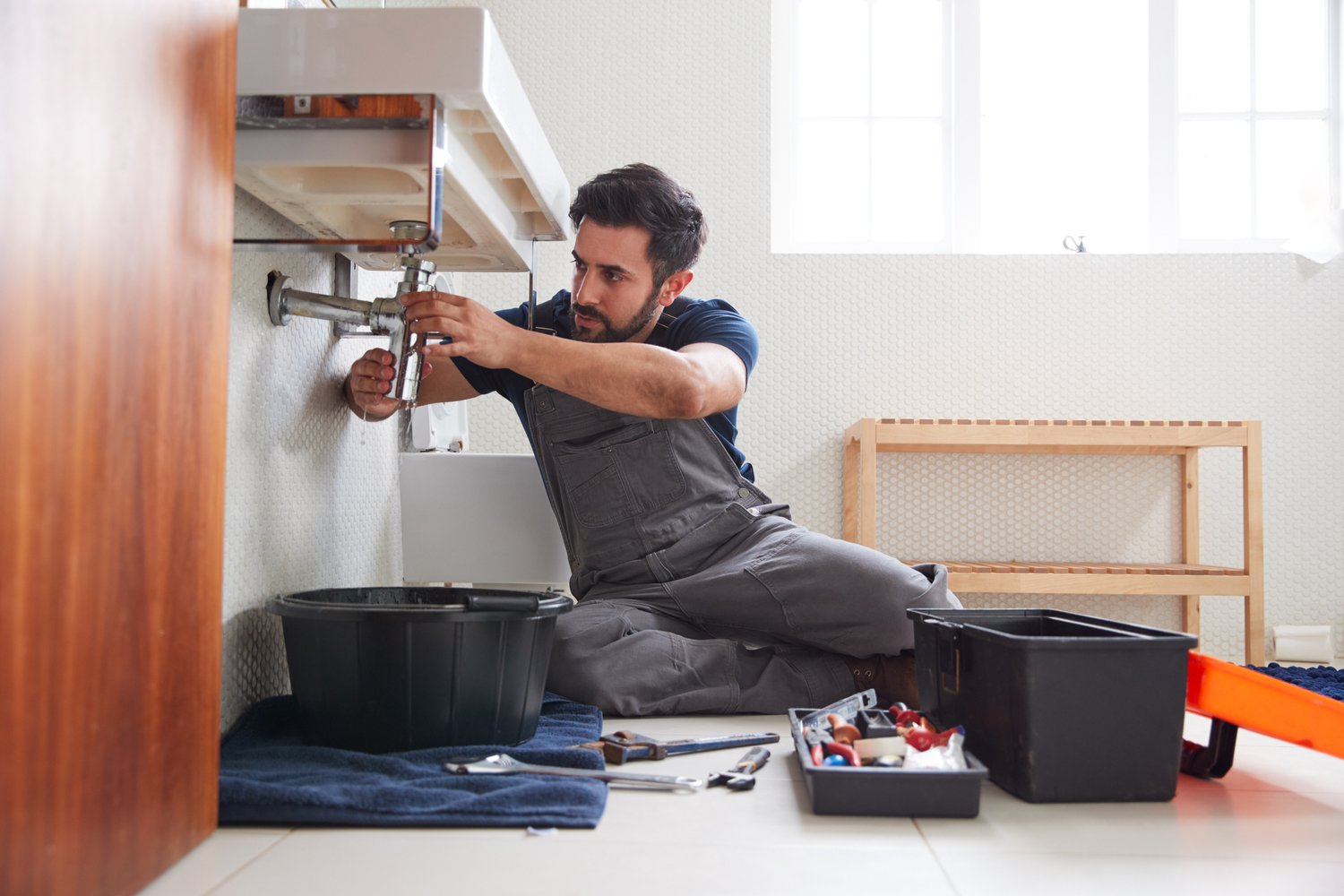6. Repair or install new pipes
Plumbing issues are another potentially enormous expense, as they’re generally located in spots that are hard to get to (underground and inside walls).
Cost: Repair for a sewer line averages $2,443, for a drain pipe it’s $559, and installing new pipes averages $1,054
Signs of a problem:
- Discoloration or flaking in exposed pipes
- Leaks
- Rusty water
Preventative measures and maintenance:
- Avoid using chemical products to unclog drains
- Insulate your pipes during the winter
- Hire a plumber to clean out your sewage pipes every few years
7. Heating/AC repair
Not only are AC and heating repairs expensive, the systems inevitably seem to break at the time of year you need them most (because it’s when they’re working the hardest). You won’t want to wait on getting them fixed.
Cost: Average of $372 for AC, $288 for furnace
Signs of a problem:
- It’s not cooling or heating
- The unit’s leaking or making strange noises
Preventative measures and maintenance:
- Hire a professional to perform yearly maintenance
- Replace your air filters every 3 months
8. Mold Removal
Mold in your home can cause a number of health issues, particularly for anyone with allergies. Even if you’re not allergic to mold itself, it can have a serious effect on your home’s resale value.
Cost: Average of $2,155
Signs of a problem:
- Musty odor
- Discoloration in the walls or ceilings
- Allergy symptoms
Preventative measures and maintenance:
- Take care of leaks right away
- Inspect your home periodically for signs of mold
9. Electrical issues
Similar to dealing with plumbing problems, it’s not easy (or safe) for the average homeowner to access or attempt to fix electrical issues because the wiring is located within walls. But if electrical issues go unfixed, you face a risk of fire – not to mention the inconvenience of your electricity not working.
Cost: Average of $318 for repairs, but up to $15,000 for rewiring
Signs of a problem:
- Circuit breakers trip regularly
- Appliances shock you
- Flickering lights
Preventative measures and maintenance:
Have a professional inspect your electrical system annually, or anytime you suspect issues.
10. Septic system repair
A septic tank not working properly can be a big, messy problem (ew). It’s not one you’ll be able to (or want to) put off fixing.
Cost: Average of $1,488
Signs of a problem:
- Toilets won’t flush
- Slow drains
- Standing, smelly water in your yard
Preventative measures and maintenance:
- Hire a professional to inspect it every 3 years
- Have it pumped every 3-5 years



